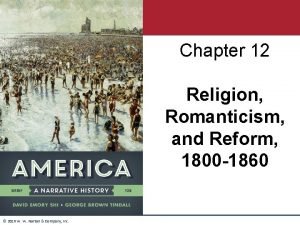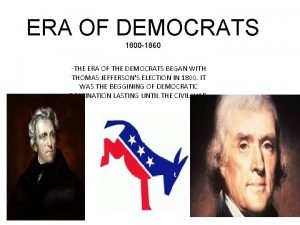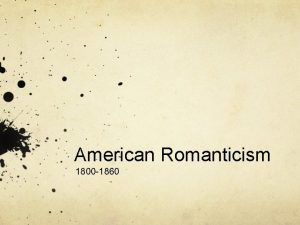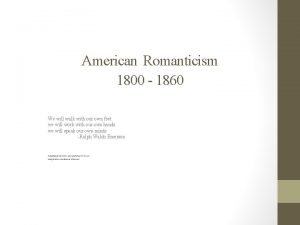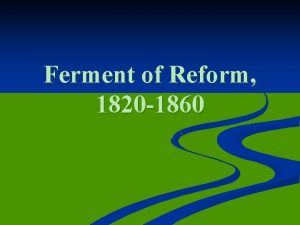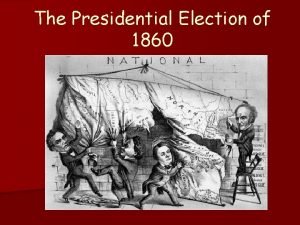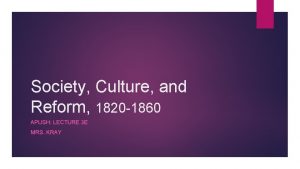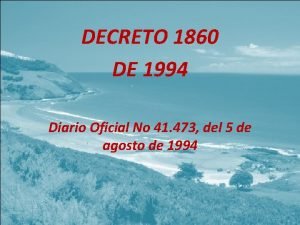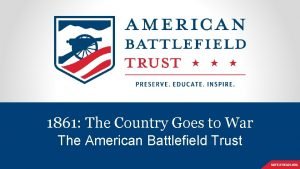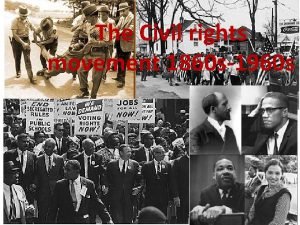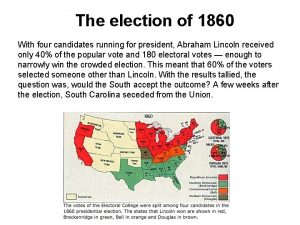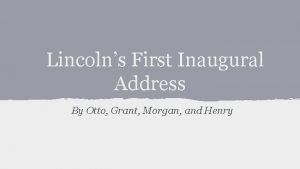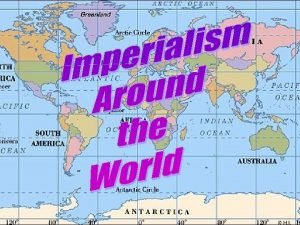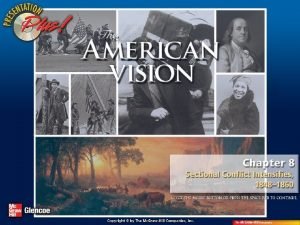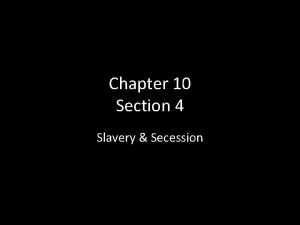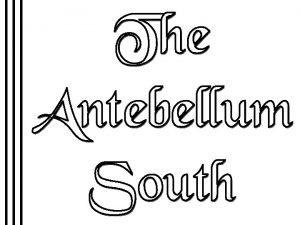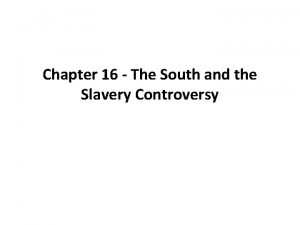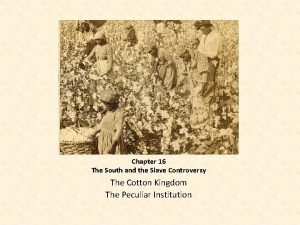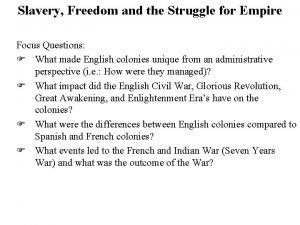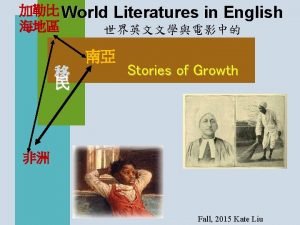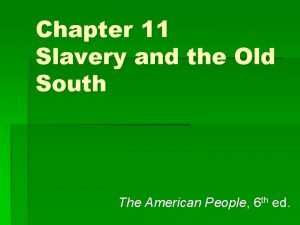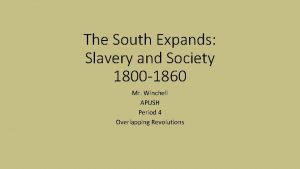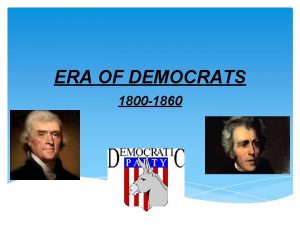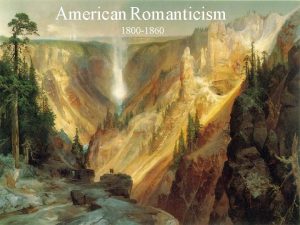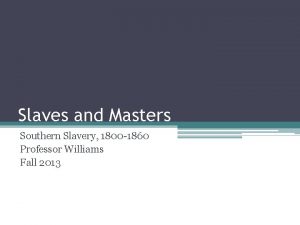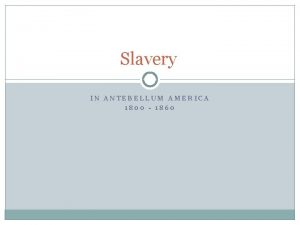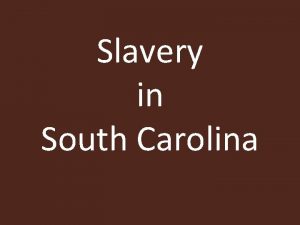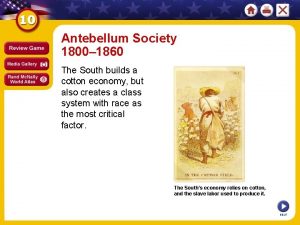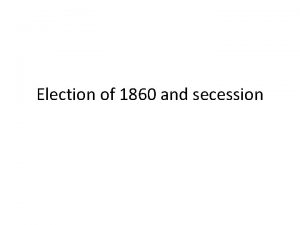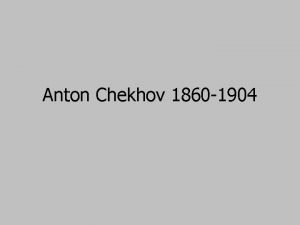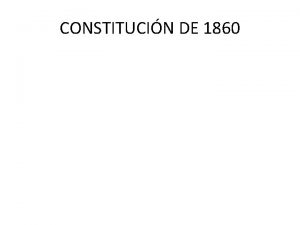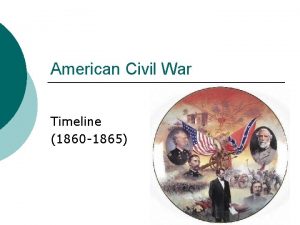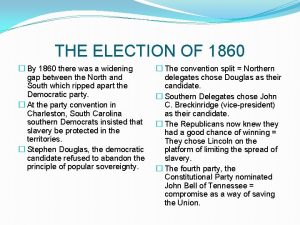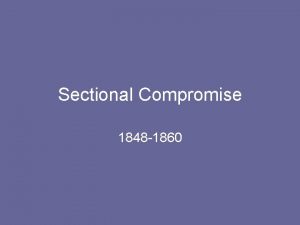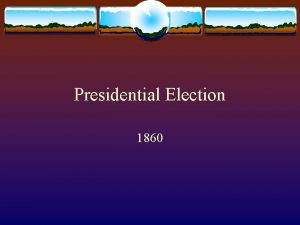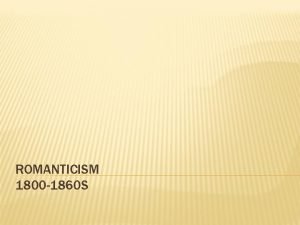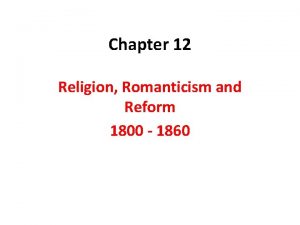Slavery and Society 1800 1860 Slavery and Society




























- Slides: 28

Slavery and Society, 1800 -1860

Slavery and Society, 1800 -1860 • King Cotton & the Old South ▫ Economics ▫ Identity ▫ Culture • Slave Life ▫ Population ▫ House and Field • Community • Resistance

King Cotton and the Old South • Cotton and the South ▫ Climate, geography ▫ Profitable ▫ England/industry • Cotton gin • Outlawed int’l trade in 1808

King Cotton and the Old South • Economics ▫ 60% of U. S. exports ▫ Basis of southern economy • Linked N & S • Linked U. S. & Britain

Cotton, slavery, race identity • Southern Identity ▫ Rural ▫ White privilege ▫ “Honor” • Fear of uprisings • “Dependence”

Cotton Culture • “…people live in cotton houses and ride in cotton carriages. They buy cotton, sell cotton, think cotton, eat cotton, drink cotton, and dream cotton. They marry cotton wives and unto them are born cotton children…” • British visitor Hiram Fuller’s views of Mobile, AL in 1858

Slavery and Expansion • • Post 1812 & Indian Removal Westward expansion Missouri Compromise Texas “Independence” • Louisiana, ARK, OK, TX • Profits used to buy more land, more land=more slaves, more crops=more profit=more land=more slaves=more crops

American Slavery • 19/55 signers of the Constitution owned slaves • Majority of southern Congressmen owned slaves • 4/6 Presidents up to and including Jackson owned slaves • $25 million in U. S. revenue vs. $1 billion in slave “property” • Shipping & ship building, insurance, banks, factories in the North


Population • 1790: 700, 000 • 1850: 4 million • 1850: 50% grew cotton • 25% of whites had slaves • 50% of owners had less than 5 slaves • 5% of planters owned 40% of all slaves in south


Slave Life • Mortality rates were 3 times higher • Life expectancy ▫ Blacks 20’s ▫ Whites 40’s • 25% sick

Slave Codes • State laws to limit movement of slaves and define them as property • Cannot own a gun • Marriages not legally recognized • No alcohol • Passes to leave plantation • Illegal to teach slaves to read or write • Legalized homicide as “punishment”

“House slaves” • • • 15%-20% Constant contact Raise children Gendered violence Reading News

“Field Slaves” • • 75% of slaves 18 hours Overseer Music and group identity



African American Community • • • Family Auctions Fictive kin Tribal culture Music, dance, spirituality

Christianity • 2 nd Great Awakening • Lay preachers • Justice, salvation • “Call and Response” • Gospel • African American Methodist Church, 1816

Free Blacks • • Non-slaves in the South 6% of total Black population 3% of total population Laws limited their rights and citizenship, papers, no access to courts • Most descended from blacks freed in Upper South • Mainly manual labor • Racial hierarchies based on skin color

Resistance • • • Work slow “Sick” Break tools “Theft” Run away Rebellion Gabriel Prosser

Resistance • • • Run away slaves Over 1, 000 Upper south Canada West

Harriet Tubman • Underground Railroad • Homes, barns, woods, trails north • 19 missions • 300 people

Family on Underground Railroad

Slave Rebellions • Gabriel Prosser 1800 ▫ ▫ Literate Richmond, VA 1000 slaves “Death or liberty” • Denmark Vescey, 1822 ▫ Telemanque, born in Africa or W. Indies ▫ Free, literate, preacher ▫ Charleston ▫ Missouri Compromise ▫ 100 men

Rebellions • Nat Turner, 1831 ▫ Virginia ▫ Literate, preacher ▫ Killed 70

Situation in 1850 s

Concluding Thoughts • Despite dependence on cotton and slavery, Southern economy became more diverse • Slavery in Upper South declined • Immigration provided cheap & flexible labor • Changes to economy made slave owners more worried • More rebellions, abolitionists, Westward expansion, made slave codes more harsh
 W.w. norton
W.w. norton American romanticism 1800 to 1860
American romanticism 1800 to 1860 Whig party beliefs
Whig party beliefs American romanticism 1800 to 1860 worksheet answers
American romanticism 1800 to 1860 worksheet answers American romanticism 1800 to 1860 worksheet answers
American romanticism 1800 to 1860 worksheet answers Values feeling and intuition over reason
Values feeling and intuition over reason American reform movements between 1820 and 1860
American reform movements between 1820 and 1860 Border states in 1860
Border states in 1860 Balais à tapis 1860
Balais à tapis 1860 Definition
Definition Apush 1820 to 1860
Apush 1820 to 1860 Decreto 1860 de 1994
Decreto 1860 de 1994 South carolina 1860
South carolina 1860 1860
1860 Map of 1860
Map of 1860 Election of 1860 pie chart
Election of 1860 pie chart South africa 1860
South africa 1860 Encounters and foundations to 1800
Encounters and foundations to 1800 Pencounters
Pencounters Foundations and encounters early american literature
Foundations and encounters early american literature Lesson 1 slavery and western expansion
Lesson 1 slavery and western expansion Chapter 10 section 4 guided reading slavery and secession
Chapter 10 section 4 guided reading slavery and secession The south and the slavery controversy
The south and the slavery controversy Chapter 16 the south and the slavery controversy
Chapter 16 the south and the slavery controversy Chapter 16 the south and the slavery controversy
Chapter 16 the south and the slavery controversy Slavery freedom and the struggle for empire
Slavery freedom and the struggle for empire Racism and slavery
Racism and slavery Chapter 11 cotton slavery and the old south
Chapter 11 cotton slavery and the old south Chapter 11 cotton slavery and the old south
Chapter 11 cotton slavery and the old south
